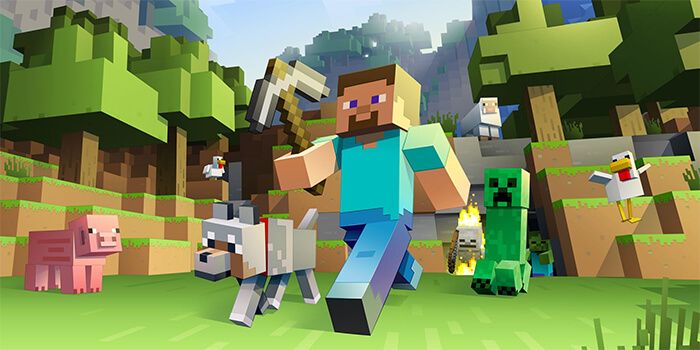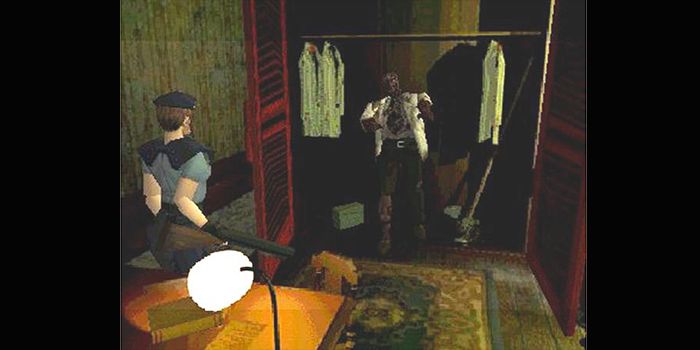Survival games aren't exactly a new genre—what objective is more prominent in games than pure survival?—but they've recently risen to incredible popularity, practically taking over Steam earl access with variations on different themes.
Unlike many game genres, there are few hard and fast rules defining what makes survival games different from others. We can identify a survival game when we play it, but because so many bring in parts of other genres, such as sandbox, simulation, or horror elements, it can be difficult to pin down what exactly constitutes survival games.
Survival Games' Roots Begin in Early Games
Staying alive is a core tenet of most video games, but survival games usually aren't about progressing a story or destroying hordes of enemies. The fun is found in simply staying alive through effective resource management, gathering, and crafting, battling enemies when they appear and staying alive despite weather, hunger, sickness, or other external forces.
The Oregon Trail is the perfect picture of early survival games—while players are journeying across America to a new home in Oregon, the story is minimal at best. It's about managing to stay alive despite the oppressive wilderness and its many hazards. The small semblance of a story and the hunting minigame take up relatively little time in comparison with managing food, injuries, and wagon wheels, making this a survival game by modern standards.
Survival elements were also present in games like 1990s Mad Max, where players had to balance the combat aspects with keeping characters alive through resource gathering. While not survival games in the strictest sense, games like this are the foundation for how we think of the genre today.
Survival Horror Strips Players of Power
What really popularized survival games was the injection of horror elements, particularly in the Resident Evil series and the game that inspired it, Sweet Home. These games were the pioneers of the survival horror genre and the first use of the term, as they limited carrying capacity and required players to heal themselves with items they find in the game rather than regenerating health over time. While plot, exploration, and defeating enemies certainly play a role in the series' fun, the limited carrying capacity and saves made survival a different experience than other games of the period, like Super Mario 64 and Crash Bandicoot—success in Resident Evil meant conserving your resources for when they were most needed.
The popularity of the series spawned clones and additional series that used the same techniques, such as Alone in the Dark and Silent Hill. Like Resident Evil, these games pit normal humans against terrifying, far stronger enemies and limit access to health and combat necessities. This was a whole new type of difficulty that prioritized strategy and conservation, rewarding players for thinking ahead and being frugal with what items they were given.
Modern Survival Games Perfect Earlier Elements
You can't talk about modern survival games without talking about Minecraft. While you can play in creative mode and make beautiful creations conflict-free, the real draw is in survival mode, where you start out with next to nothing and have to search out food, shelter, and resources to keep yourself alive against the monsters that spawn in the dark. Minecraft allows you to explore the world at your leisure and take on stronger foes, but that requires time—the sandbox nature of the game means that there's no wrong way to play it, even if you choose not to pursue the endgame bosses.
From the success of Minecraft, we get games like Don't Starve, a small nod to the survival horror genre with its cute but creepy, Tim Burton-esque artwork and monsters. There's plenty to be done in the game, but it takes time, effort, and skill to survive long enough to see it—unlike games with a more narrative structure, in survival games, the main objective is staying alive, not progressing.
And it's no surprise that zombies, one of the hottest trends of the past few years, are also huge in the survival games genre. With DayZ, H1Z1, and even Dying Light to an extent, there's no end to the amount of survival fun to be had with walking corpses breathing down your neck. Games like The Forest and Ark: Survival Evolved don't use zombies, but cannibals and dinosaurs make formidable enough foes—just like in survival horror, your enemies have more power than you and managing your resources is key to having any chance of survival.
There are more straightforward, realistic experiences available too. Rust is more heavily based in wilderness survival than violent enemy survival, equipping players with nothing but a rock and a torch to get them started. There's also The Long Dark, in which players' main enemy is the harsh frozen wilderness and the cruelty of nature. In these games, you're meant to stay alive as long as possible and learn more about the world—while there might be story available, the story is only accessible to those who tame the wilderness first.
Survival Games Satisfy Genre Fans While Continuing to Innovate
It's not hard to see why these games are so popular—they're new experiences that challenge a lot of preconceptions about what games are. They're immensely satisfying, making experiences like surviving a night or overcoming a pretty simple enemy far more fun than they are in other games. And while they might be the hot new trend of the moment, with plenty of lackluster clones of successful titles flooding Steam, there's still a ton of innovation possible within the genre.
What are your favorite survival games?


